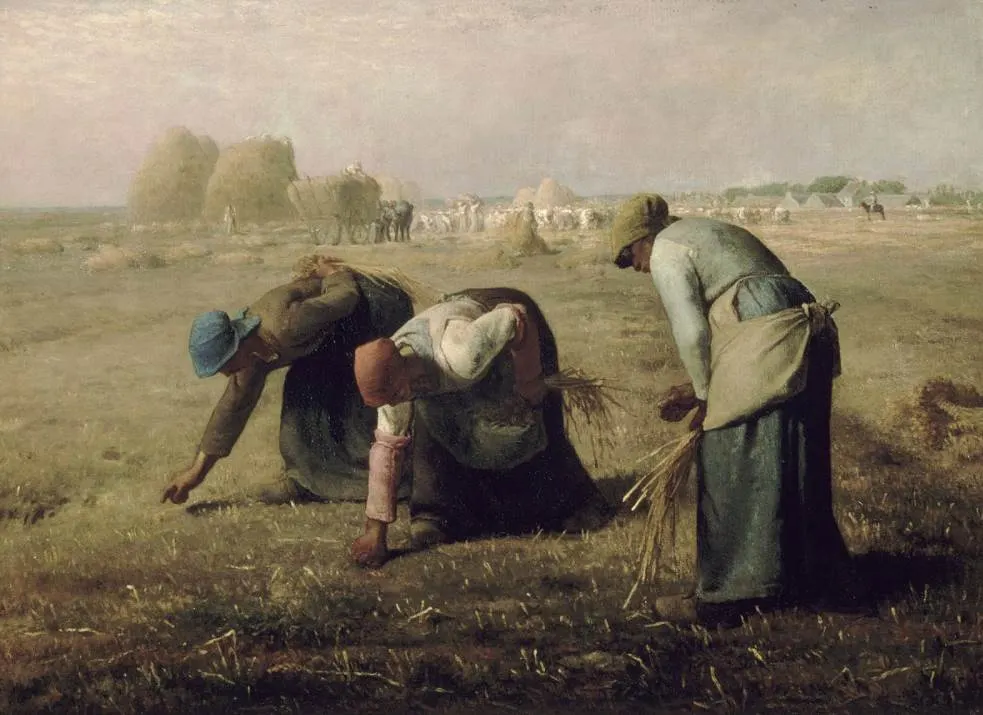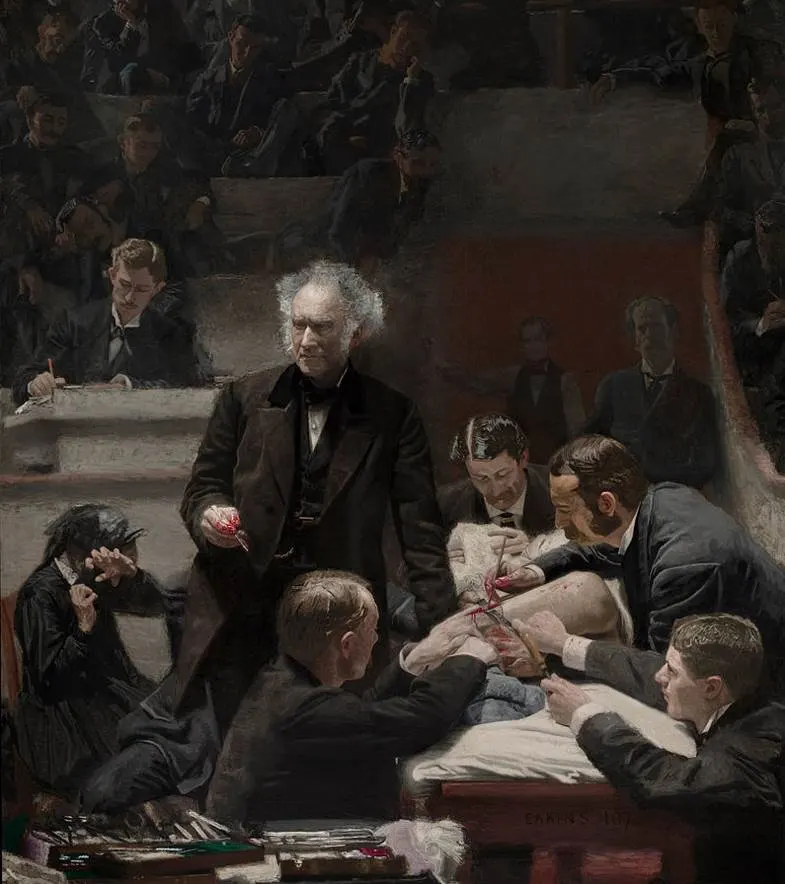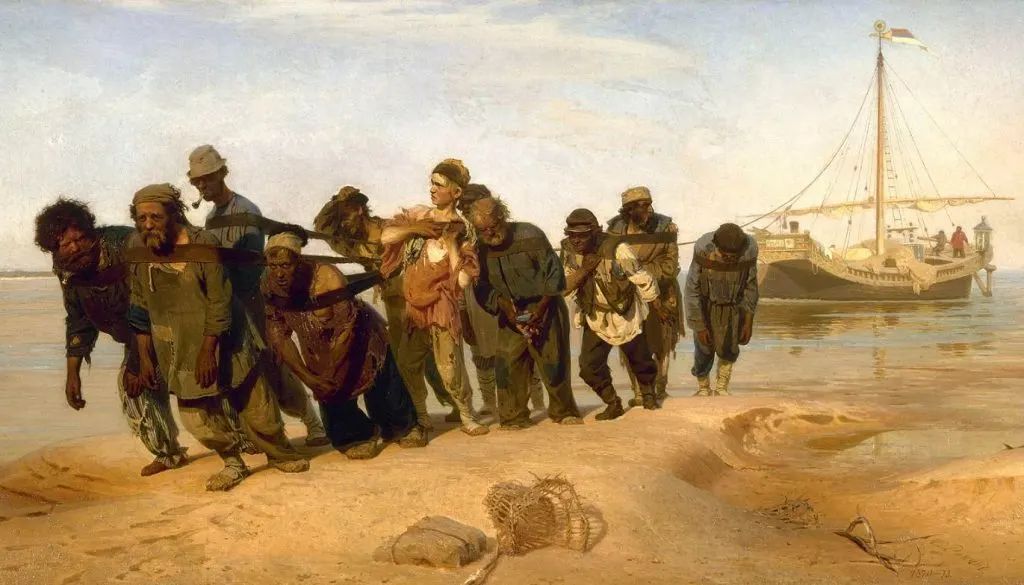Trying to represent subject matter in art as truthfully as possible in the visual arts has been done by Realism artists since the Renaissance. This, in turn, had its roots in classical antiquity.
Realism art also refers to an art movement that emerged as a reaction to Romantic art in the mid-19th century and which spread all across Europe.
In this article, we’ll take a closer look at both Naturalism and Realism, the style, and the art movement.

History of Realism Art
Art in ancient Greece was dominated by an idealized depiction of subject matter. There were, however, a few artists who resited idealization such as Demetrius of Alopece in the 4t century B.C.
The rise of truthful depictions of subject matter really started to shine during the Roman Republic when politicians preferred truthful portraits.
When Augustus (63 B.C.-14 A.D.) laid the foundation of the Roman Empire and became the first Roman Emperor, this all changed once again in favor of propaganda. There isn’t a single sculpture of Augustus as an old man, although he lived until 75.
Although idealization still played a major role in Gothic art, this gradually changed during the early Renaissance. Especially the paintings of Flemish Primitives such as Jan van Eyck (1390-1440) and Robert Campin (1375-1444) marked this new trend.
Many Italian artists weren’t as fond of naturalism as artists from northern Europe during this period. Michelangelo generally refused to paint portraits because he couldn’t integrate additional beauty.
The Baroque era marked another turning point. The paintings of artists such as Caravaggio (1571-1610) and Diego Velázquez (1599-1660) featured an incredible dose of realism and influenced many other artists all around Europe.

Depicting simple subject matter such as laborers doing ordinary tasks or people having dinner became popular and this trend continued until the 19th century.
One of the most important art movements in the United States emerged in the mid-19th and early 20th centuries and is known as American Realism.
The works of Edward Hopper (1882–1967), Winslow Homer (1836-1910), and Thomas Eakins (1844-1916) are great examples of this movement.

Important characteristics of Realism art
Realism art can also be described as Naturalism or Illusionism, and although it might refer to a specific art movement, the general characteristics of these terms are similar.
- Realism art refrains from any form of idealization.
- The entire composition accurately depicts the subject matter.
- The accurate depiction of historical figures (although there is no example such as in Christian art).
- The shapes, lighting, and colors are exactly as they appear for the artist.
- Realism artists have great knowledge of both animal and human anatomy.

Naturalism vs Realism art
Naturalism is a term that describes artists who refuse to integrate idealized elements into their art. They accurately render compositions as they appear. The term has been described as follows:
The naturalist school declares that art is the expression of life under all phases and on all levels, and that its sole aim is to reproduce nature by carrying it to its maximum power and intensity: it is truth balanced with science
Realism as an art movement emerged in the aftermath of the French Revolution of 1848. Artists such as Gustave Courbet (1819-1877) and Jean-François Millet (1814-1875) aimed to depict the common man as they truly were.
Millet was one of the leading figures of the Barbizon School which mainly focused on landscape paintings in rural areas.
Courbet was a Socialist who sometimes tried to make a political statement with his works, transforming them into leftist propaganda (or at least, that’s how they were perceived).
The French movement later spread to other parts of Europe, especially Russia, Germany, and Great Britain. Ilya Repin (1844-1930) and Hubert von Herkomer (1849-1914) were successful Realism painters outside of France.

Important Realism artworks
There’s no better way to discover what Naturalism and Realism are all about than to check out some of the most important Realism artworks. below is a list with some of the most famous examples:
- The Gleaners (1857) – An iconic painting by Millet that depicts two female laborers working in a field.
- Old Woman Frying Eggs (1618) – One of the best examples of Velázquez’s realism paintings in Seville.
- The Gross Clinic (1875) – A painting by Thomas Eakins that depicts an important development in medical history.
- Barge Haulers on the Volga (1870-1873) – A monumental painting by Ilya Repin which depicts laborers almost collapsing while dragging a barge on the banks of the Volga River.
Do you want to learn more? Make sure to check out these famous Realism paintings!

